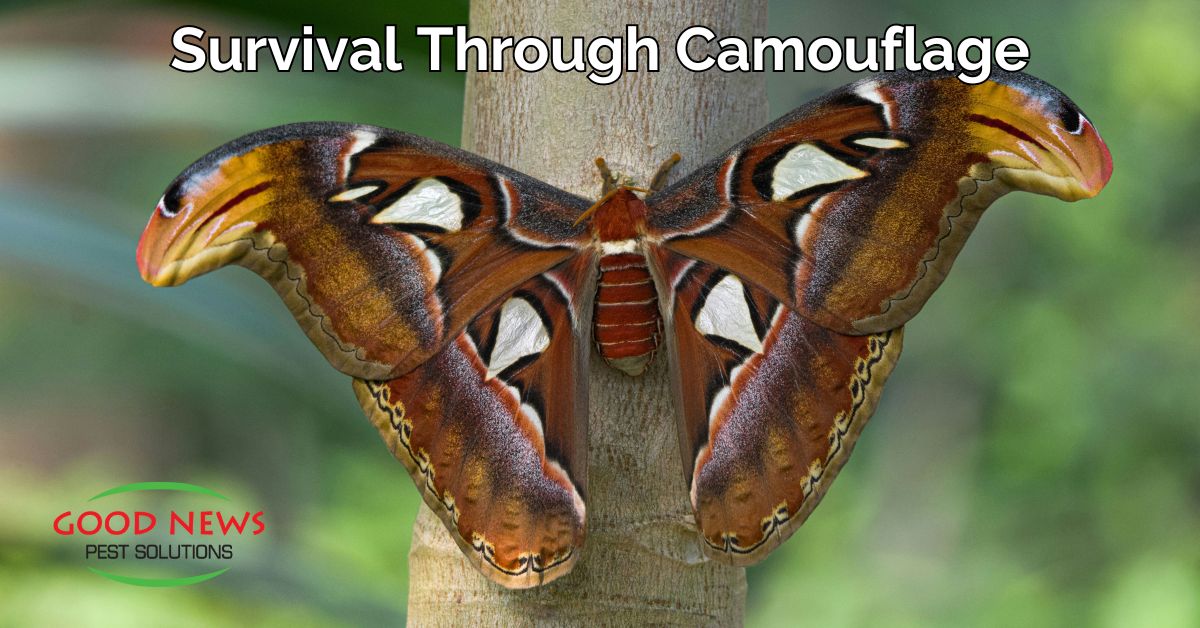
Survival Through Camouflage
We all have those days where we just want to hide. Bury ourselves deep into the woods, the ocean, or just the couch cushions; disappear from the world. For us, it’s usually a stress thing, or a reaction to a person or task we’d rather not deal with right at any given moment. For insects, though, being able to “disappear” can be vital to their very survival.
Meet the Mimic
In most cases, insects that mimic other insects, animals or plant life do so for their protection. If you’re a Viceroy butterfly, birds will avoid eating you because you look like a Monarch butterfly, which is poisonous to them. Ironically, recent research confirmed that Viceroy butterflies have their own unique toxins.
Recently it was discovered that a few species of damselflies – similar to dragonflies – mimic toxic butterflies. And not just in their bright flashy appearance. These Polythoridaes actually adapted to copy the flight styles and patterns of certain toxic butterflies, flying “under the radar” of their predators.
Similarly, the snowberry clearwing moth is often left alone because of its resemblance to a bumblebee, but with no sting. Many insects take the more passive approach – if you can’t see me, you can’t eat me. These insects appear to be a plant or a leaf, disappearing even to the human eye, until they move.
And then there’s the acanthaspis petax. Also known as an assassin bug, these insects mostly prey on ants – and as a “fun” side note, stack their corpses on themselves like a backpack. It uses this to hide from (or maybe just creep out?) predators.
A Striking Pose
One of the most exotic and beautiful of insects who exercise mimicry is the Atlas moth, pictured above. To humans, at a little distance it looks like any other butterfly, albeit a bit more colorful. But concentrate on the top corners of the wings. You’ll notice both sides look very much like the head of a cobra (or maybe an eagle?) about to strike.
The wings even continue as the “body” of the deadly snake. To be fair, some entomologists are still not sold on the idea that Atlas moths use mimicry. While cobras are prevalent in the parts of the world where Atlas moths also live, they point out more than one species of moths and butterflies have a similar, if not as well defined, look. The ones who do believe in this particular defense mechanism postulate that natural selection resulted in the Atlas being most developed.
The Atlas’ primary predators are also visual hunters, so it makes sense they might be fooled by the dueling cobra wings. Another feature of their wings is an apparent false eye spot that can startle predators, or at least divert their attacks away from the more vulnerable parts of the moth.
A Leafy Lookalike
There are many insects who use natural mimicry to hide in plain sight. Some of the most well-known of these are the insects in the family Tettigoniidae, more commonly known as katydids. To us, they’re bright green bugs just visible on the leaves and green branches they perch on. But they’re all but invisible to the birds who would normally eat them.
More cunning perhaps are the various insects that we miss entirely because they’re so well camouflaged. These would be hiders like the dead leaf butterfly. When its wings are folded up, they look exactly like a dead leaf, complete with faded browns, blemish spots, veins and midrib.
The walking stick is almost impossible to spot when it’s laying on a pile of sticks or twigs. It’s long, thin appearance blends with its habitat, protecting it. Sand grasshoppers blend with near perfection into the sandy beaches and dry grassy prairies of North America.
Now You See Me, Now You’re Lunch!
Not all mimics do it for protection – or at least not only for that.
Take the dead leaf mantis, from Malaysia, who not only uses its ability to look like a dead leaf to hide from prey, but also to hide for prey. These close cousins to the praying mantis bear a brownish shield on their backs that looks like a leaf. They can also ‘play dead’ when startled.
One of the most beautiful insect predators uses its looks to its advantage. Displaying bright, varying shades of white, pink and purple, the Orchid Mantis sits like the flowering plant it derives its name from. There it waits for unsuspecting butterflies or moths to alight and then it gobbles them up. This mantis adapts very well, detecting the humidity and light to transform itself into the appropriate shading.
While God’s creation is full of beautiful, interesting insects, most of us would prefer they stay away from us – at the very least, out of our homes. On the Gulf Coast of Florida, this is especially true of the roaches, ants and annoying flies.
Good News Pest Solutions is here to help. Our Go Green Perimeter Plus program eliminates the standard creepy crawlies we see from your home and prevents them from reentering. And it does it at an affordable price, with a solution that’s safe for your family and pets, as well as the planet. For more details on this, or any of our effective solutions, please give us a call!
Proudly Serving
Sun City Center, Ruskin, Palmetto, Parrish, Ellenton, Bradenton, Anna Maria, Holmes Beach, Bradenton Beach, Longboat Key, Lakewood Ranch, University Park, Myakka City, Sarasota, Siesta Key, Osprey, Nokomis, Casey Key, Venice, Englewood, North Port, Port Charlotte, Punta Gorda, Arcadia
Things You Can Do
Pay Your Bill Online
Leave Us a Review
Request a Free* Termite Inspection
Stop Mosquito Bites
Get Rid of Rodents
Get a Termite Damage Warranty
Get Pest Control for Your Attic
Get Pest Control for Your Business Request Prayer
Corporate Address
1080 Enterprise Court, Ste A
North Venice, FL 34275
Call Now: (941) 412-9610
Text: (941) 412-9610
Fax: (941) 412-0080
